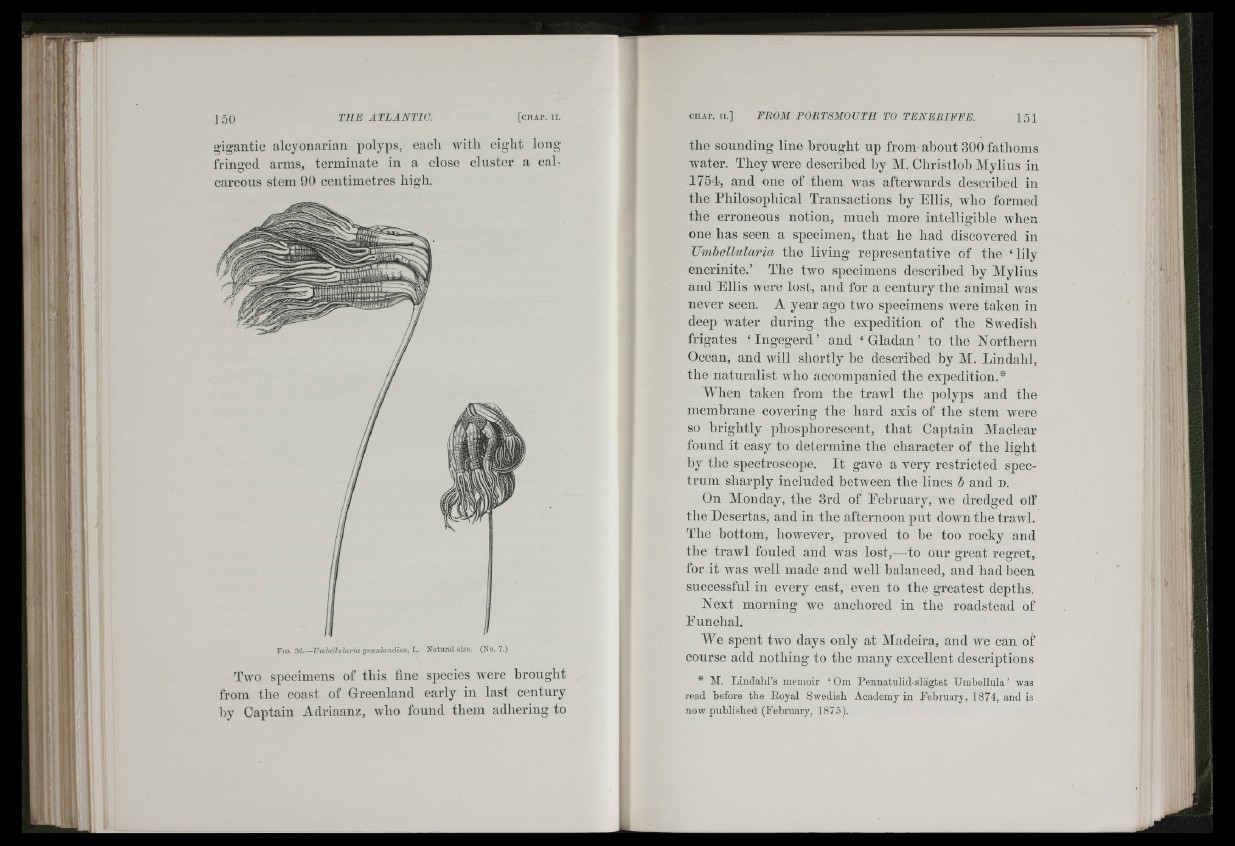
te. jiji
i iij
- uI' .
j j i
4-r
11.
■G' ,!4];
2 J A I
1
‘ i
-■\'
i1b •
3! '
ii
? ?
lli 1-
I f
ll
■Aj.*i fSi
H] [
; H' a:
;-y r
Ll
id
iin; J
■It i
■HI S.
gigantic alcyonarian polyps, each with eight long
fringed arms, terminate in a close cluster a calcareous
stem 90 centimetres high.
Fig. H^.— V rn h d lu la r ia groenlandica, L. N a tu ra l size. (No. 7.)
Two specimens of this fine species were brought
from the coast of Greenland early in last century
hy Captain Adriaanz, who found them adhering to
the sounding line brought up from- about 300 fathoms
water. They were described by M. Christlob Mylius in
1754, and one of them was afterwards described in
the Philosophical Transactions by Ellis, wbo formed
the erroneous notion, much more intelligible Avlien
one has seen a specimen, that he bad discovered in
JJmhellularia the living representative of the ‘ lily
encrinite.’ The two specimens described by Mylius
and Ellis were lost, and for a century the animal was
never seen. A year ago two specimens were taken in
deep water during the expedition of the Swedish
frigates ‘ Ingegerd’ and ‘ Gladan’ to the Northern
Ocean, and will shortly be described by M. Lindahl,
the naturalist who accompanied the expedition.*
M^hen taken from the traAvl the polyps and tbe
membrane covering the hard axis of the stem were
so brightly phosphorescent, that Captain Maclear
found it easy to determine the character of the light
hy the spectroscope. It gave a very restricted spectrum
sharply included hetween the lines h and n.
On Monday, the 3rd of Eehruary, we dredged off
the Desertas, and in the afternoon put down the trawl.
The hottom, however, proved to he too rocky and
tbe trawl fouled and was lost,—to our great regret,
for it was well made and well balanced, and had been
successful in every cast, even to the greatest depths.
Next morning we anchored in the roadstead of
Eunclial.
We spent t\vo days only at Madeira, and we can of
course add nothing to the many excellent descriptions
* M. Lindahl’s memoir ‘ Om Pennatulid-sliigtet Umbellula’ was
read before the Royal Swedish Academy in February, 1874, and is
now published (February, 1875).